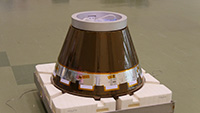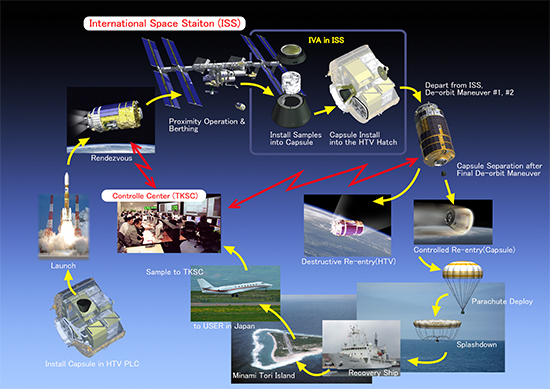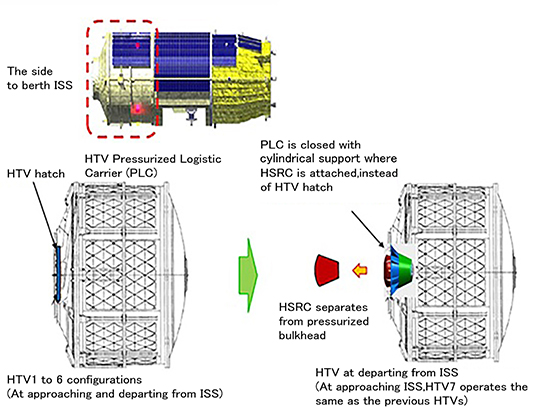This is an archive of information released in the past.
Disclaimer: It may contain broken links or outdated information. Some parts may not function in current web browsers.
*Visit https://humans-in-space.jaxa.jp/en/ for the latest information.

H-II Transfer Vehicle KOUNOTORI (HTV)
HTV Small Re-entry Capsule
In the mission of HTV7 (“KOUNOTORI 7”), after completing the re-supply mission to ISS, HTV7 will demonstrate the novel technology for recovering experiment samples from ISS, which Japan has not obtained up until now, by taking advantage of the opportunity of re-entry into Earth with the HTV Small Re-entry Capsule (HSRC) that will be loaded on the HTV for the first time ever.
HSRC mission
The HSRC with experiment samples on board will be attached onto the hatch of the Pressurized Logistic Carrier (PLC) of the HTV7 before the HTV7 departs (un-berthed) from ISS. After the HTV7 deorbit burn finished, the capsule will be released from the PLC by the command from the ground and re-enter into Earth’s atmosphere, and subsequently descend on a parachute. The capsule will be recovered from the ocean after splashdown.
HSRC and its payload container overview
The HSRC aboard HTV7 “KOUNOTORI7”, where samples will be kept cool in a passive way (no electric cooler), houses a vacuum double layer insulation container (thermos bottle) and a heat storage unit (refrigerant), inside of which experiment samples will be stored.
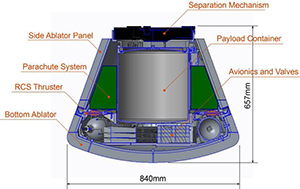
Cross section image of HSRC (Credit: JAXA)
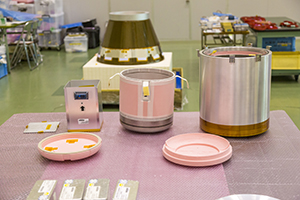
Configuration of HSRC and payload container (Credit: JAXA)
Installation of HSRC
Before the HTV7 departs from ISS, the crew will load an HSRC-exclusive structure (cylindrical support) onto the hatch at the entry of the Pressurized Logistic Carrier for air tightness (while the hatch of the HTV7 is left open). Onto the structure, the HSRC with the separation mechanism attached will be fixed.
After completing the de-orbit maneuver, the HTV7 will operate the separation mechanism of the HSRC according to the command received from the ground to separate the HSRC from the vehicle.
The HSRC will re-enter Earth’s atmosphere in a guided lift flight, deploy a parachute, and splash down into the sea, which in turn be picked up by Recovery Ship.
Experiment samples taken out from the HSRC will be loaded onto an airplane on Minamitori Island, immediately delivered to the mainland of Japan (The HSRC itself will remain aboard the recovery ship to be delivered to the mainland).
| Copyright 2007 Japan Aerospace Exploration Agency | Site Policy |
